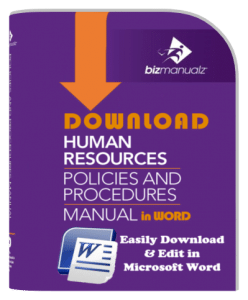How Do You Create An Effective Employee Retention Program?

In the past two years, we’ve seen the “Great Resignation” with remote work enabling masses of people to easily quit their jobs for something better. With more competition than ever for your best people, you need to be making an active effort to retain talent. How do you create an effective employee retention program?
A Full Guide to Crafting an Effective Employee Retention Plan That Actually Works
Whether it’s a grocery store or a tech startup building conversational AI software, employee retention is critical for running a smooth operation. Training and onboarding efforts will be pointless if turnover is too high because skills and knowledge keep leaving the company.
So why are people leaving? The common factors include burnout, desiring a better work-life balance, unhappiness with management or culture, or concerns about the company’s future. One survey by Robert Half found that 65% of workers were primarily looking for a better salary.
A robust employee retention program needs to be able to address all of these concerns. With that in mind, let’s cover how to plan and implement a program that keeps your best talent in the company.
What Is an Employee Retention Program and Why Is It Important?
Without good employee retention, you won’t be able to build strong client relationships with your customers. Not only will you lose the close relationships that your sales and customer success teams have built with clients, but you’ll also lose the expertise that enables your company to deliver a good service.
If employees know how to write a business contract agreement on the fly, they’re more valuable to you and your customers than someone who needs to be trained and reassured.
There’s no one-size-fits-all solution for every company. Your employee retention program has to respond to your company’s specific needs. Some quick strategic goals you can aim for in your program which will help reduce turnover include:
- Give employees the time they need to complete training or side projects to advance their abilities.
- Creative incentives and rewards for good performance and exceeding quotas, and thank employees who remain with the company every year.
- Be more accommodating with time off and flexible schedules. Make the transition painless and guilt-free if a full-time employee has to move to part-time due to family obligations. Better to have your best talent around for 2-3 days a week than to lose them entirely.
- Promote open communication between management and employees, creating a feedback mechanism that offers both parties constructive feedback. This could generate ideas like more all-hands customer support or using a chatbot for support to free up the customer service team’s time.
- Provide staff members more authority to make decisions about their work, increasing their engagement and responsibility.
How to Craft an Employee Retention Program that Works
Measuring your current turnover rate is essential, but it’s useless information without something to compare it to. Knowing where you stand concerning industry benchmarks is the first step in developing or strengthening an employee retention program.
Look at sites like LinkedIn or Glassdoor to discover your competitors’ turnover rates. This will give you the most relevant benchmarks to achieve. If they’re all seeing high turnover, it might be an industry trend like a seasonal trend or a flood of work to comply with new regulations.
Start with Onboarding
Your new hires won’t stick unless they can do their jobs effectively. Every new hire needs to be properly onboarded so they’re set for success.
Your onboarding process should teach new employees about the work, the processes they need to carry out, the corporate culture, and how they can excel. As soon as your retention program is in place, put it front-and-center in your hiring and onboarding processes. They’ll be coming in with an idea of their long-term future in the company, and it’ll demonstrate that you’re focused on helping your employees excel.
Think about Tools
One underappreciated aspect of employee retention is tooling. If you’re in the tech industry or hire many developers, you’re working with people who are passionate about good software and hardware.
In any department like your call center, up-to-date 8×8 alternatives and new hardware will help people work better. But for developers, outdated technology can indicate a company falling behind the times. Reviewing the tools you use regularly and asking the tech teams about how it helps or hinders them might be something you need to account for.
Use Mentorship
An excellent addition to your onboarding process, particularly in a remote setting, is pairing a new hire with a mentor. Mentors can welcome new employees to the team, provide advice, and answer questions.
And it benefits both parties. It’s often said that the best way to learn something is to teach others, and your experienced employees can refine their thinking about the work by breaking it down to someone else.
And don’t just offer mentoring opportunities to new hires. Relationships between mentors and mentees can benefit your current team, giving them more skills and making them more valuable to the company.
You’ll reduce turnover if your employees can see a future in your company, and you can create that with learning and development programs. Whether that’s running a short course or paying people to read an omnichannel marketing guide for small businesses in their own time, a little can go a long way.
Review Compensation
You should continuously review salaries to compete for new talent and retain good staff. It helps if your salaries are greater or equal to your competitors, but this isn’t always realistic, especially for smaller organizations. If you’re not in a position to raise salaries outright, think about other forms of compensation, such as bonuses.
For your team’s performance, establish goals and offer incentives. Another move, popular among startups, is to provide stock options. This incentivizes employees to stick with the company through hard years, with the promise of huge rewards if the team can get the business off the ground.
Adjust to Feedback
Your weekly, monthly, and yearly cadence of 1:1 meetings with employees should be a fundamental part of your employee retention program. Discuss your employees’ short- and long-term professional goals during these meetings, and assist them in imagining their futures with the business.
Just getting a sense of your employees’ professional priorities and ambitions, and committing to helping them get there, can transform how they feel about their future with your company. That could be with learning and development programs or a more flexible work policy that makes room for the family they’re trying to start.
Build Up a Rewards Scheme
In a well-established company or team, think about occasional rewards like tickets and discounts. There’s a whole industry that exists to make rewards programs easy for you, and a small investment here can do a lot to make employees feel valued.
But avoid wasting money on unnecessary items or schemes. When setting up your program, send out a survey about the incentives and benefits your staff would like so you can offer rewards they’ll appreciate.
Outside of tangible rewards, make sure the managers in your company are showing their direct reports how their work is benefitting their colleagues and other teams.
Even a simple show of appreciation now and then can decrease turnover. Whether it’s tied to targets like positive apps store reviews or given out after the fact, even a small rewards system for employees can keep them motivated.
Implementing Your Employee Retention Program
To get the essential buy-in from employees, you should show them that this initiative is here to stay. For instance, a commitment to flexible work hours and vacation alternatives will have a significantly larger influence on staff retention rates than a one-off event or bonus holiday after a big milestone.
Qualitative interviews can help you learn more about what candidates or new hires enjoy about your company. When an employee does leave, exit interviews enable you to find out why they’re leaving. It should put all feedback into your employee retention program as you’d use customer feedback to improve a product.
Similarly, adjusting weekly 1:1s and all-hands meetings to slowly encourage a culture of feedback would be considerably more beneficial than simply sending out a quarterly survey.
Your marketing team tracks data daily, from web analytics to their affiliate marketing network. In the same way, you should be using data to measure the success of your employee retention program.
KPIs like yearly turnover rate and rate of absence can measure the engagement with your program. A decline in both measures would be signs of success. Indirect measures like your customer satisfaction rate and net promoter score could also be valuable here.
Retaining Your Best Asset
Your employees are your most valuable asset. And as you can see now, creating a program to retain that talent isn’t so hard. A minimal commitment to rewarding and developing talent will put you in the upper ranks of companies in your industry, but a substantial investment here could be the thing that starts pushing your company to the #1 spot.
 Author Bio: Grace Lau – Director of Growth Content, Dialpad
Author Bio: Grace Lau – Director of Growth Content, Dialpad
Grace Lau is the Director of Growth Content at Dialpad, an AI-powered cloud communication platform for better and easier team collaboration. She has over 10 years of experience in content writing and strategy. Currently, she is responsible for leading branded and editorial content strategies, partnering with SEO and Ops teams to build and nurture content with the help of a Sentiment analysis tools on Dialpad. Grace Lau also published articles for domains such as Vyond and Tapfiliate. Here is her LinkedIn.
















Leave a Reply